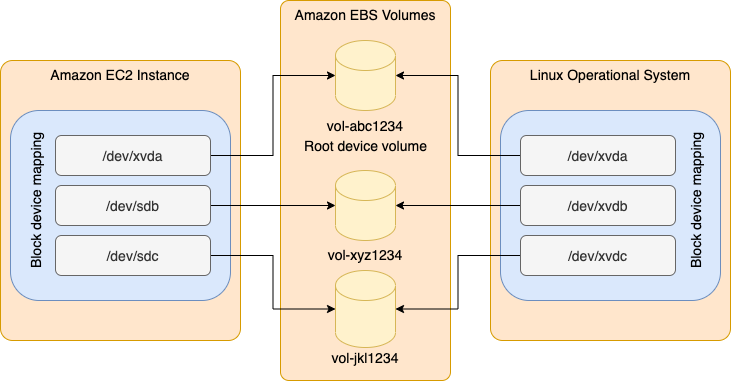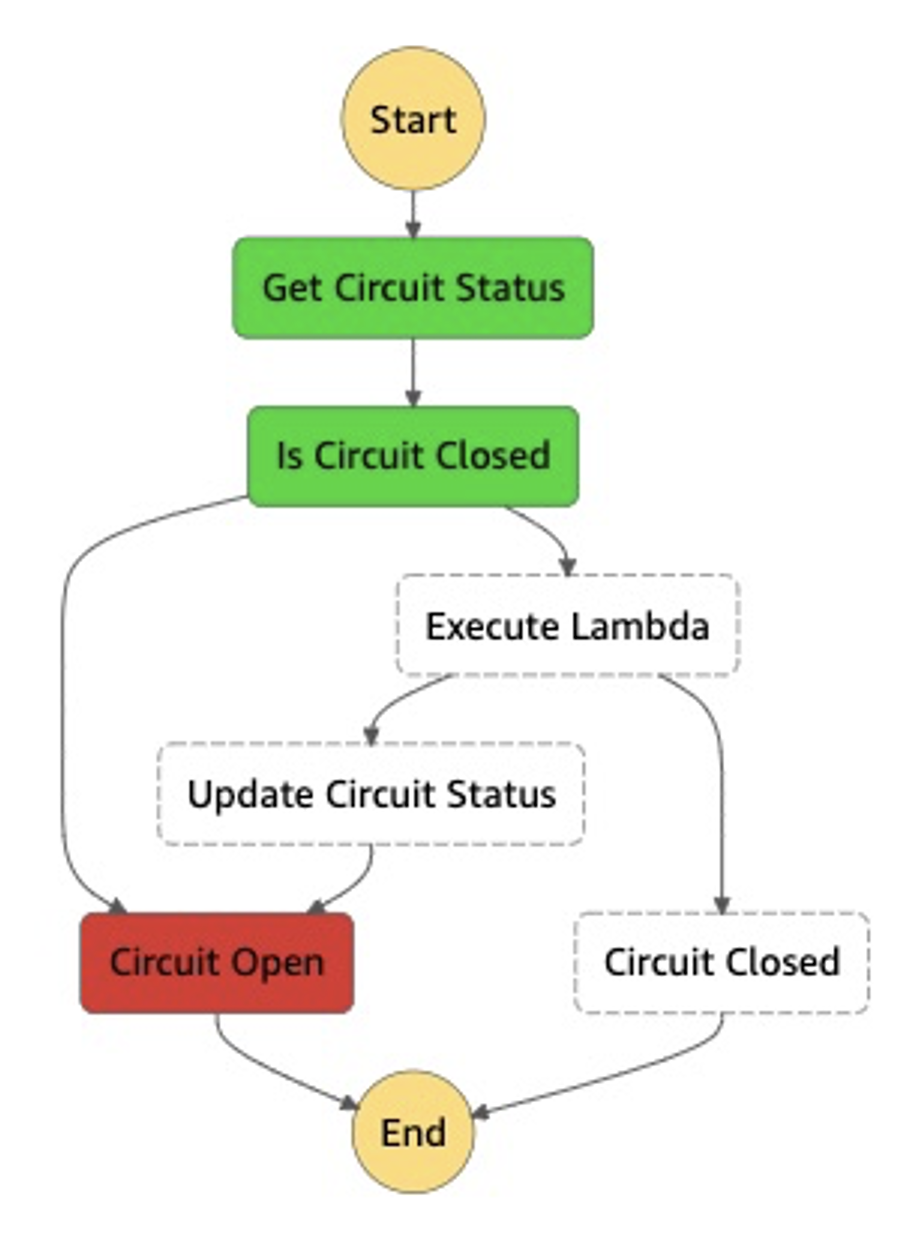Post Syndicated from limillan original https://aws.amazon.com/blogs/compute/how-to-mount-linux-volume-and-keep-mount-point-consistency/
This post is written by: Leonardo Azize Martins, Cloud Infrastructure Architect, Professional Services
Customers often use Amazon Elastic Compute Cloud (Amazon EC2) Linux based instances with many Amazon Elastic Block Store (Amazon EBS) volumes attached. In this case, device name can vary depending on some facts, such as virtualization type, instance type, or operating system. As the device name can change, the customer shouldn’t rely on the device name to mount volumes from it. The customer wants to avoid the situation where a volume is mounted on a different mount point just because the device name changed, or the device name doesn’t exist because the name pattern changed.
Customers who want to utilize the latest instance family usually change the instance type when a new one is available. The device name can be different between instance families, such as T2 and T3. T2 uses /dev/sd[a-z], while T3 uses /dev/nvme[0-26]n1. If you mount a device on T2 called /dev/sdc, when you change the instance family to T3 the same device won’t be called /dev/sdc anymore. In this case, it will fail to mount.
Amazon EBS volumes are exposed as NVMe block devices on instances built on the AWS Nitro System. The block device driver can assign NVMe device names in a different order than what you specified for the volumes in the block device mapping. In this situation, a device that should be mounted on /data could end-up being mounted on /logs.
On Linux, you can use the fstab file to mount devices using kernel name descriptors (the traditional way), file system labels, or the file system UUID. Kernel name descriptors aren’t persistent and can change each boot. Therefore, they shouldn’t be used in configuration files.
UUID is a mechanism for giving each filesystem a unique identifier. These identifiers’ attributes are generated by filesystem utilities (mkfs.*) when the device is formatted, and they’re designed so that collisions are unlikely. All GNU/Linux filesystems (including swap and LUKS headers of raw encrypted devices) support UUID.
As UUID is a filesystem attribute, it can also be used with Logical Volume Manager (LVM) and Linux software RAID (mdadm).
Depending on the fstab file configuration, you may find that you can’t access your instance, which requires you to follow a rescue process to fix issues. This is the case if you configure the fstab file with the device name and change the instance type.
This post shows how to mount Linux volumes and keep mount points preserved when the instance type is changed or the instance is rebooted.
Overview of solution
When you create an instance, you specify block devices mapping. It doesn’t mean that the Linux device has the same name or can be discovered in the same order as specified on the instance mapping. This situation can be more evident when using applications that require more volumes.
Using UUID to mount volumes lets you mitigate future issues when you stop and start your instance or change the instance type.
Figure 1: EC2 instance block device mapping
Walkthrough
You will create one instance with three volumes: one root volume and two data volumes. We use Amazon Linux 2 in this post. In this instance type, volumes have a specific name format. Later, you will change the instance type. The new instance type volumes will have another name format.
Follow these steps:
- Create an instance with three volumes
- Create the filesystem on the volumes and mount them
- Change the instance type
Prerequisites
For this walkthrough, you should have the following prerequisites:
- An AWS account
- Linux knowledge
Create instance
Create one instance with three volumes: a root volume and two data volumes. Use Launch Instance Wizard with the following details.
Launch Amazon Linux 2 instance
- On Step 1, choose Amazon Linux 2 AMI (HVM), SSD Volume Type.
- On Step 2, choose micro.
- On Step 3, choose Next.
- On Step 4, add two new volumes, device
/dev/sdb10 GiB and device/dev/sdc12 GiB.
Figure 2: Launch instances, add storage
Create filesystem and mount
Connect to your instance using EC2 Instance Connect or any other method that feels comfortable for you. Mount the device using UUID instead of the device name. Run the following instructions as the user root.
Format and mount the device
- Run the following command to confirm that you have three disks:
$ lsblk - Format disk as xfs, and run the following commands:
mkfs.xfs /dev/xvdb mkfs.xfs /dev/xvdc - Create mount point, and run the following commands:
mkdir /mnt/disk1 mkdir /mnt/disk2 - Add mount instructions, and run the following commands:
echo "$(blkid /dev/xvdb | awk '{print $2}') /mnt/disk1 xfs defaults,noatime" | tee -a /etc/fstab echo "$(blkid /dev/xvdc | awk '{print $2}') /mnt/disk2 xfs defaults,noatime" | tee -a /etc/fstab - Mount volumes, create dummy file, and run the following commands:
mount -a touch /mnt/disk1/file1.txt touch /mnt/disk2/file2.txt
You will have an fstab file like the following:
cat /etc/fstab
UUID=7b355c6b-f82b-4810-94b9-4f3af651f629 / xfs defaults,noatime 1 1
UUID="2c160dd6-586c-4258-84bb-c79933b9ae02" /mnt/disk1 xfs defaults,noatime
UUID="3e7a0c28-7cf1-40dc-82a1-2f5cfb53f9a4" /mnt/disk2 xfs defaults,noatime
Change instance type
Change the instance type from t2.micro to t3.micro.
Launch Amazon Linux 2 instance
- Stop instance.
- Change the instance type to micro.
- Start instance.
- Connect to your instance using EC2 Instance Connect.
- Check the device name, and run the following command:
lsblk- List files, and run the following command:
ls -l /mnt/*Note that the device names are changed from xvd* to nvme*. All of the devices are mounted without any issue and with the correct mount points.
Cleaning up
To avoid incurring future charges, delete the instance and all of the volumes that you created in this post.
The other side
UUID is an attribute of the filesystem that was generated when you formatted your device. Therefore, it will follow your device even if you create an AMI or snapshot. So you don’t need to worry about a restore process, and it will smoothly proceed to an instance restore. You must be careful if you restore a snapshot from one volume and attach it to the same instance, as you will end-up with two volumes that are using the same UUID. If you try to mount the restored volume on the same instance, then it will fail and you will find this message on /var/log/messages file. kernel: XFS (xvdf1): Filesystem has duplicate UUID f6646b81-f2a6-46ca-9f3d-c746cf015379 - can't mount It is even more important to be careful if you attach a volume created from the snapshot of the root volume and restart your instance. Since both volumes have the same UUID, you may find that a volume other than the one attached to /dev/xvda or /dev/sda has become the root volume of your instance. See the following example for details. Note that both volumes have the same UUID, but the one mounted on / is /dev/xvdf1, not /dev/xvda1, which is the real root volume for this instance.
$ blkid /dev/xvda1: LABEL="/" UUID="f6646b81-f2a6-46ca-9f3d-c746cf015379" TYPE="xfs" PARTLABEL="Linux" PARTUUID="79fae994-3708-4293-bb29-4d069d1c786b" /dev/xvdf1: LABEL="/" UUID="f6646b81-f2a6-46ca-9f3d-c746cf015379" TYPE="xfs" PARTLABEL="Linux" PARTUUID="79fae994-3708-4293-bb29-4d069d1c786b"
$ lsblk
NAME MAJ:MIN RM SIZE RO TYPE MOUNTPOINT
xvda 202:0 0 8G 0 disk
└─xvda1 202:1 0 8G 0 part
xvdf 202:80 0 8G 0 disk
└─xvdf1 202:81 0 8G 0 part /Conclusion
In this post, we covered how to use UUID to mount Linux devices using fstab file. This keeps the mount point on the correct device. It also lets you change the instance type without changes to the fstab file. You can use UUID with LVM and Linux software RAID (mdadm), UUID, as an attribute of the filesystem, will be the same even after a backup and restore process, snapshot, or clone. To learn more, check out our block device mappings and device names on Linux instances documentation.


















